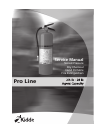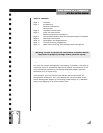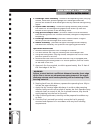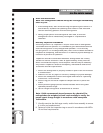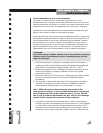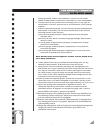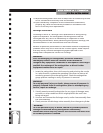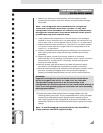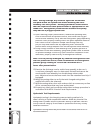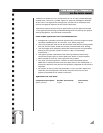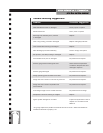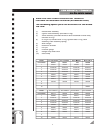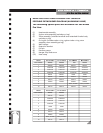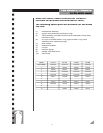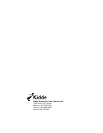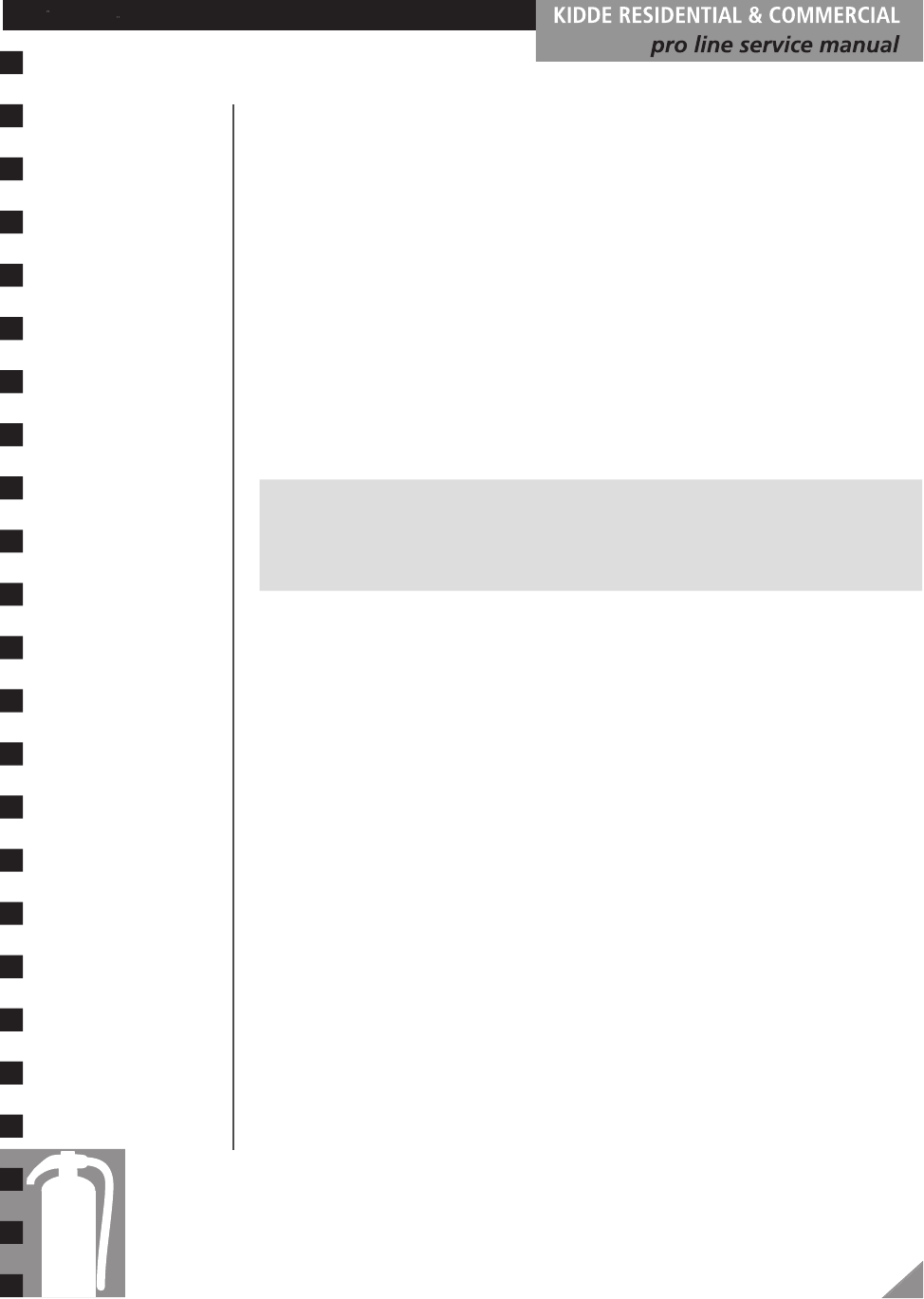
6
Annual Maintenance & Service Procedures
Per NFPA-10, maintenance is a thorough examination of a fire
extinguisher and is intended to provide maximum assurance that it will
operate effectively and safely. It includes a thorough examination of all
components and the repair or replacement of such items if necessary.
Maintenance should be performed at intervals not to exceed one year
apart or any time an inspection discrepancy dictates.
Kidde recommends that only authorized Kidde distributors or personnel
having been properly trained to recognize and correct discrepancies, as
well as understand all the proper industry safety procedures, conduct
the maintenance or service of Kidde fire extinguishers. Refer to the
trouble shooting section of this manual for additional information on
specific equipment observations or discrepancies. Only Kidde factory
replacement parts are recommended for use in Kidde extinguishers.
WARNING:
To prevent injury or death, always ensure all pressure is properly
relieved from an extinguisher prior to attempting any service,
repair or recharge.
1. Ensure extinguisher is installed in its proper location and that it is
readily accessible. Most Kidde dry chemical extinguisher models are
approved for temperature ranges between -40° F to +120° F.
2. Remove extinguisher from its hanger or bracket and ensure that all
mounting hardware is properly installed, secure and in good
operating condition.
3. Externally examine unit for any signs of damage that might prohibit
service or dictate the need for any special maintenance/repair
procedures.
4. The periodic re-hydrostatic test date of the extinguisher should be
checked. The maximum periodic interval for Kidde dry chemical
stored pressure hand portable fire extinguishers is 12 years.
Note: NFPA-10 requires stored pressure dry chemical fire
extinguishers having a 12 year periodic hydrostatic test interval
to be emptied and internally examined every 6 years. Should
this 6 year tear down requirement be due, refer to the recharge
section of this manual for recommended procedures.
5. Unthread and remove the discharge nozzle, and/or hose assembly
from the cylinder valve assembly and visually ensure it is not plugged
or obstructed. Closely examine the discharge nozzle, and/or hose
assembly (including hose crimp couplings) for any damage, wear or
conditions which might effect their proper function. Verify that the



